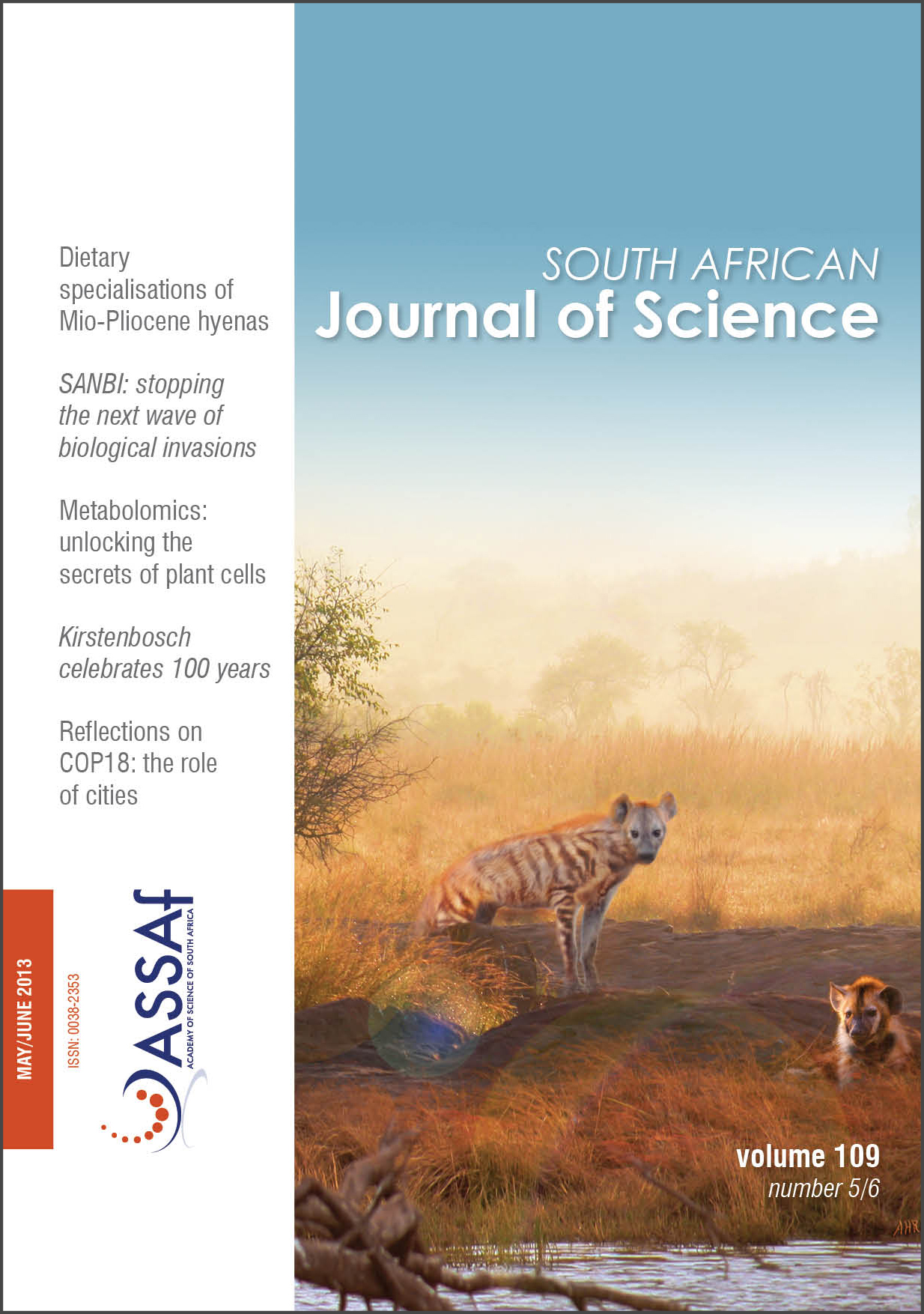A first report on meteor-generated seismic signals as detected by the SANSN
DOI:
https://doi.org/10.1590/sajs.2013/20120022Keywords:
meteor, seismic, eye-witness, Mussina, trajectoryAbstract
A bright meteor with an apparent magnitude of -18 was seen over large parts of southern Africa at ~23:00 South African Standard Time on 21 November 2009. Here we discuss the eye-witness accounts related to the meteor as well as the seismic signals generated by the meteor’s passage through the atmosphere as detected by the Mussina seismograph station forming part of the South African National Seismograph Network. Two signals were identified on the seismogram; the first arrival is interpreted as a precursor coupled seismic wave and the second, which arrived ~138 s after the first, as a directly coupled airwave. The meteor is thought to have entered the atmosphere close to Mussina shortly before 22:55.06 local time, from where it proceeded in a westerly to northwesterly direction with an elevation angle not exceeding 43°. Our results presented here dispel the beliefs of many observers who thought that the meteor must have made landfall very close to their localities. In addition, this contribution documents the first instance of meteor-related seismic signals recorded by the South African National Seismograph Network.
Published
Issue
Section
License

All articles are published under a Creative Commons Attribution 4.0 International Licence
Copyright is retained by the authors. Readers are welcome to reproduce, share and adapt the content without permission provided the source is attributed.
Disclaimer: The publisher and editors accept no responsibility for statements made by the authors
How to Cite
- Abstract 283
- PDF 632
- EPUB 182
- XML 200












.png)